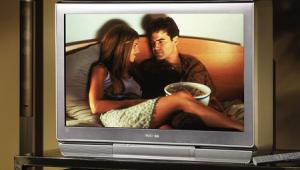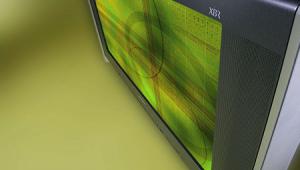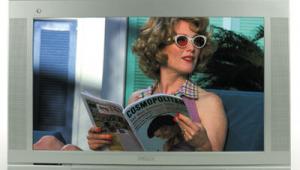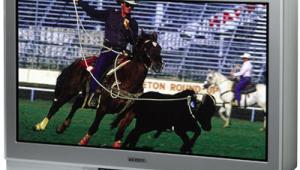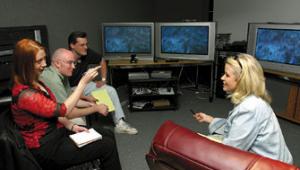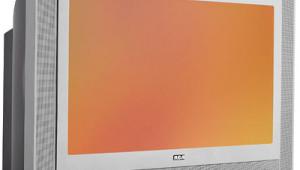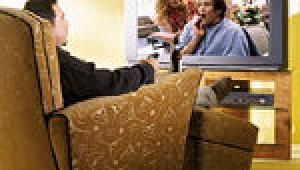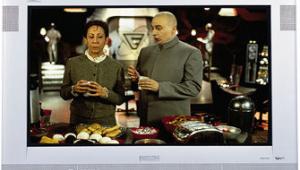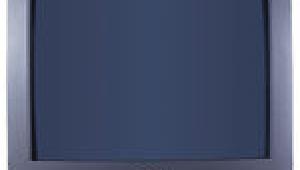Loewe Aconda Direct view 16:9 HDTV monitor Calibration

Out of the box, the Aconda's contrast was too high, but surprisingly, the Contrast control wasn't turned to its maximum setting. Brightness wasn't bad (a bit too low, actually), and color and tint were close to correct. Sharpness was too high, as usual, but again, the control wasn't turned all the way up. When you adjust one of the user video controls, the rest of the menu disappears, and the control indicator relocates to the bottom of the screen, where it is out of the way while you make your adjustment, which is great. Also, the setting is indicated with a bar graph and numerical readout, which is doubly great.
After roughing in the user controls using Video Essentials, I saw very good separation of the color bars, with no bleed and sharp boundaries, and the PLUGE patterns looked quite good. Interestingly, the Needle Pulse pattern seemed to indicate excessive contrast even at very low settings, but normal program material looked just fine at a setting of just over 50%. (During these adjustments, the aspect ratio kept changing from 4:3 to 16:9; it turned out that the Auto Letterbox Detect parameter is turned on by default, and it was interacting with Video Essentials in weird ways. I turned it off and all was well.)
When Tom Norton came over to help calibrate the color temperature, I reset the user controls to their defaults so we could measure the out-of-box condition. After selecting the Medium color-temperature preset, we measured the peak white (100 IRE): 44 foot-lamberts with the NTSC Standard parameter off and 23fL when it was on. (Turning NTSC Standard on lowers the user contrast setting from 50 to 32.) We also measured the gray scale before calibration (see graph), which actually wasn't too bad.
Still, we wanted to get it closer, so we decided to calibrate the Medium color-temperature preset with the NTSC Standard parameter turned on. As you can see in the graph, we were able to get it very close to 6500K across the board. All we had to do was reduce the green-drive control very slightly and the blue-drive control a bit more; we made no adjustments to the cutoff controls at all.
When I looked at some other test patterns, it was clear that the Aconda held its black level well between the low and medium APL PLUGE patterns, indicating a more-than-adequate power supply. Convergence was good except in the corners, as expected, and the geometry was very good except for a slight horizontal shift to the left. We did notice a small problem in low-level flat fields: at 20 IRE, the left third of the screen was slightly pink, while the right two-thirds was slightly bluish. This was not noticeable above 40 IRE, and was certainly not visible on normal program material, even dark scenes.—SW
